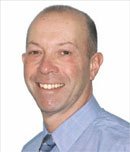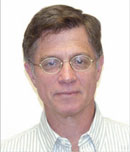Essential Dental Systems, Inc.
|
Question No. 1
Inside Dentistry (ID): The dental industry and the oral health care arena have been changing rapidly within the past 5 to 10 years. What do you see as the most significant of those changes?
Essential Dental Systems (EDS): As dentists and as manufacturers, we have seen a shift away from empiric products and techniques to new materials, procedures, and techniques that are evidence-based. The days of developing and using products and techniques based on conjecture are being rapidly replaced with new techniques and products that are based on the newest high-tech developments in electronics, engineering, material science, and the biological sciences. Both in vitro and ex vitro research are playing a bigger and bigger part in product development. We are seeing fewer and fewer products coming to market with minimal research that force the dentist be the ultimate researcher, sometimes to the detriment of the patient.
Question No. 2
ID: In what ways—both internally and in dealing with the broader oral health care marketplace—has your company responded to these changes?
EDS: Since founding Essential Dental Systems, Inc., in 1982, we have recognized that research (both clinical and academic) was and is the key to a successful technique and product. We have devoted approximately 25% of our physical space to research and development and clinical teaching. Since 1982, we have published over 200 research articles in the top peer-reviewed dental journals around the world. We firmly believe dental products and techniques should be tested both in vitro and ex vitro before they come to the market, not after.
Question No. 3
ID: What do you see as your biggest responsibility to the marketplace, and why does your choice rank as your No. 1 priority?
EDS: We define the marketplace as the dentist and the practice of dentistry. Consequently, we feel that our top priority is to deliver to the dentists techniques and products that work under the severe conditions of day-to-day clinical practice. Techniques and instruments like the Flexi-Post®, Ti-Core®, SafeSiders®, and PulpOut™ bur that perform their functions routinely under the most arduous of clinical conditions. We try to develop techniques and materials in the laboratory that will make our products the most operator-friendly they can be clinically.
Question No. 4
ID: What product categories—whether preventive, restorative, operative, auxiliary, diagnostic, etc.—do you feel are most in need of innovation based on what’s currently available?
EDS: The diagnostic category in dentistry seems to be screaming for attention. Our diagnostic methods are a poor second to medicine. We currently have no good diagnostic means to determine the relative health of the pulp. When is the useful lifespan of an amalgam filling over? Is there decay under that radiopaque crown? Where is that facial pain coming from? Are there diagnostic markers from that periodontal disease as it relates to the status of the patient’s heart? Are there biological markers in the saliva for systemic disease and overall patient health?
A major diagnostic advancement in dentistry now beginning to appear is three-dimensional CAT scan imaging. The image can be sliced and diced in any of three planes to see all of the dental structures from views we have never seen before. This opens up a wealth of diagnostic information never before available to us. When redoing endodontic treatment we can now see if there is a second mesialbuccal canal or not or whether there are extra root canals that were never treated.
Question No. 5
ID: What do you see as the best approach to the research, development, testing, and ultimate delivery to the market of such needed advancements?
EDS: The best approach is always through the cooperation of academic and corporate research. As cooperation increases, the ideas of the best and the brightest of academia can be incorporated into new development and research in industry. The investment in research and development in both the dental industry and the dental schools will ultimately pay great dividends in the form of future products and new technologies unthought of at present. We have witnessed the start of this with the introduction of CAD/CAM machines like CEREC. The elimination of impressions and the deliverability of one-visit ceramic restorations are fantastic.
Question No. 6
ID: With the saturation of competitive options in many product categories, what advice can you give to dentists when selecting products for clinical use?
EDS: First, we would never say that product categories are saturated with products. It seems that each product has its own unique characteristics that appeal to certain segments of the dental marketplace. The famous “it works well in my hands” still applies to many products being sold today. However, the rate of new product introductions is enormous and growing quickly. How does one choose which product to use? It is not easy and does require some work on the dentist’s part. To make a reasonable choice on what products to use, the dentist should read reviews of new products and techniques in the top three evaluation newsletters; go to continuing education lectures about the products and techniques; go to hands-on courses featuring materials that the dentist may want to try; discuss these items with friends and colleagues who are currently using them; keep current with the basic research regarding these products; and chat with friends and colleagues online in dental forums.





